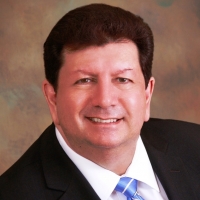I was wondering if my project would still quality as being in a TEA if my employees do most of their work in a non-TEA. For example, if I had a cleaning company with headquarters in a TEA, but with employees who worked mostly on cleaning buildings in non-TEAs, what problems could that cause? What do I need to know about EB-5 and TEA guidelines?
Answers

Reza Rahbaran
EB-5 Immigration attorneysIt appears you are referring to a direct EB-5 investment. Therefore, the jobs must be created within the geographical TEA.

Fredrick W Voigtmann
EB-5 Immigration attorneysIn order to qualify for the lower investment amount of $500,000, the new commercial enterprise (NCE) must be principally doing business in a TEA. The USCIS EB-5 policy memo of 05/30/2014 defines what it means to be "principally doing business" in a TEA. One of the four factors is the location of the employees. Therefore, it would be difficult to argue for TEA status if your employees are not working in a TEA. The other factors are the locations of the expenditures, the day to day operations, and the assets of the NCE.

Salvatore Picataggio
EB-5 Immigration attorneysThe idea of employment creation is that it is located within a specified geographic area, which will include both the TEA and non-TEA areas. The job creating entity must be "principally doing business" in the TEA.

A Olusanjo Omoniyi
EB-5 Immigration attorneysIt is feasible for the EB-5 project employees to work in a non-TEA. The issue here is more or less a corporate law matter. If your business is located in a TEA area, and all these employees are hired and paid from the TEA area, then it should not matter where you obtain contracts and send them to perform those contracts. In order to successfully do this, advisably, you need to talk to an EB-5 immigration attorney.

Philip H Teplen
EB-5 Immigration attorneysI suggest you build a hypothecate regional center, and then you would have contiguous area flexibility.

Rohit Kapuria
EB-5 Immigration attorneysThe key to meeting the requirements is that the principal place of business has to be in a TEA. We just worked on a somewhat similar case and would be happy to offer you a complimentary consult to further discuss. There may be certain facts associated with your project proposal that may or may not work for EB-5 purposes.


Ed Beshara
EB-5 Immigration attorneysIn a direct EB-5 project, the direct full time employees should be employed in the TEA. While in an EB-5 Regional Center project, the indirect employees may be located outside the TEA.

Jeffrey E Campion
Creating EB-5 Regional CentersHello. That is a great question. It will require in-depth analysis, but it can be done. We have cases approved where a construction company reviews and analyzes properties to be acquired at its headquarters and its employees work there and are paid there. But, the redevelopment projects may or may not be located in a TEA. In that case, we were able to convince CIS that the principal place of business headquarters was in the TEA and thus the investment amount was $500,000. The analysis is fact-specific, which is why you would need to speak in detail with your attorney.
DISCLAIMER: the information found on this website is intended to be general information; it is not legal or financial advice. Specific legal or financial advice can only be given by a licensed professional with full knowledge of all the facts and circumstances of your particular situation. You should seek consultation with legal, immigration, and financial experts prior to participating in the EB-5 program. Posting a question on this website does not create an attorney-client relationship. All questions you post will be available to the public: do not include confidential information in your question.






